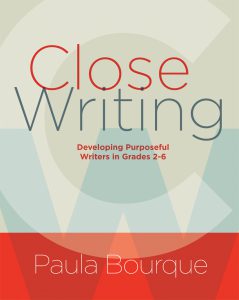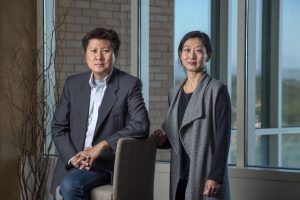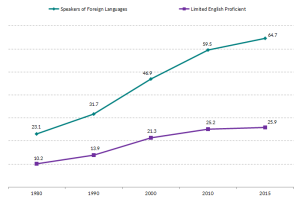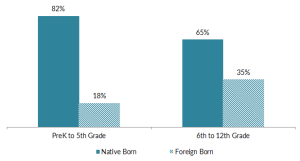 For most U.S. public school educators, the election of Donald Trump is causing great concern not only due to his divisive rhetoric but because of his disregard for the achievements of the public school system and his only clearly formulated education policy: the promotion of school “choice” through a voucher system to allow “funds to follow the student to the public or private school they attend” (www.donaldjtrump.com/policies/education).
For most U.S. public school educators, the election of Donald Trump is causing great concern not only due to his divisive rhetoric but because of his disregard for the achievements of the public school system and his only clearly formulated education policy: the promotion of school “choice” through a voucher system to allow “funds to follow the student to the public or private school they attend” (www.donaldjtrump.com/policies/education).
Trump’s education policy is based on the premise that America’s public education system is failing its students despite evidence indicating that income inequality, and in particular, high levels of child poverty, are the keys determining factor in educational success. Despite his claims to be a pragmatist, Mr. Trump has ignored such data as well as the evidence which proves that charter schools are not the “silver bullet” which will automatically improve educational outcomes.


 With a collection of award-winning e-books, Fable Learning’s digital content is specially designed to engage Pre-K–8 students in learning and discovery. Educators rely on Fable Learning for enhanced support to inspire reading and meet learning objectives in the classroom, in the library, and at home.
With a collection of award-winning e-books, Fable Learning’s digital content is specially designed to engage Pre-K–8 students in learning and discovery. Educators rely on Fable Learning for enhanced support to inspire reading and meet learning objectives in the classroom, in the library, and at home.
 Can a computerized assessment measure expressive language skills? This is an important question, since the ability to express ideas is one of the major indicators for College and Career readiness. Many times, I am asked this question in workshops. Participants inquire about expressive language skills because they associate expressive language with oral vocalizations. To analyze this question, we must first define expressive communication and its components.
Can a computerized assessment measure expressive language skills? This is an important question, since the ability to express ideas is one of the major indicators for College and Career readiness. Many times, I am asked this question in workshops. Participants inquire about expressive language skills because they associate expressive language with oral vocalizations. To analyze this question, we must first define expressive communication and its components.

 Paula Bourque’s enthusiasm for experience her subject is undeniable. She is a K–8 literacy coach in Augusta, Maine, and has worked for 28 years in education. Her book Close Writing: Developing Purposeful Writers in Grades 2–6 provides solid instruction in developing purposeful writers. The target audience is elementary school instructors, but writing instructors for other grade levels will find useful techniques here also. Close reading is really rereading, and re-engaging with the text to determine what is missing. Bourque readily acknowledges that writing is hard work and too often students feel that when the task is done, they are done with the task. Often, when she asked students to read their work aloud, she found that they also treated that as a task and read their writing too quickly.
Paula Bourque’s enthusiasm for experience her subject is undeniable. She is a K–8 literacy coach in Augusta, Maine, and has worked for 28 years in education. Her book Close Writing: Developing Purposeful Writers in Grades 2–6 provides solid instruction in developing purposeful writers. The target audience is elementary school instructors, but writing instructors for other grade levels will find useful techniques here also. Close reading is really rereading, and re-engaging with the text to determine what is missing. Bourque readily acknowledges that writing is hard work and too often students feel that when the task is done, they are done with the task. Often, when she asked students to read their work aloud, she found that they also treated that as a task and read their writing too quickly. Robinson speaks to Jorge García about the prospect of multilingual paraprofessionals filling the growing demand for bilingual educators
Robinson speaks to Jorge García about the prospect of multilingual paraprofessionals filling the growing demand for bilingual educators A new study has found that positive language used by Americans is on the decline. A new study conducted by researches at USC Dornsife and the University of Michigan suggests that the shift has been happening over the past 200 years. Research shows that people tend to use more positive words than negative, something that behavioral scientists have coined as the language positivity bias (LPB). This LPB has been on the steady decline, however.
A new study has found that positive language used by Americans is on the decline. A new study conducted by researches at USC Dornsife and the University of Michigan suggests that the shift has been happening over the past 200 years. Research shows that people tend to use more positive words than negative, something that behavioral scientists have coined as the language positivity bias (LPB). This LPB has been on the steady decline, however.
 While a record 64.7 million people ages five and older in the U.S. spoke a language other than English at home in 2015, a growing share of them are also fully proficient in English. According to analysis of census data by the Migration Policy Institute, “an independent, non-partisan, non-profit think-tank dedicated to the study of the movement of people worldwide,” 60% of those speaking a foreign language at home were fully proficient in English in 2015, up from 56% in 1980—even as immigration levels rose significantly.
While a record 64.7 million people ages five and older in the U.S. spoke a language other than English at home in 2015, a growing share of them are also fully proficient in English. According to analysis of census data by the Migration Policy Institute, “an independent, non-partisan, non-profit think-tank dedicated to the study of the movement of people worldwide,” 60% of those speaking a foreign language at home were fully proficient in English in 2015, up from 56% in 1980—even as immigration levels rose significantly. The analysis found that the vast majority of English-language learners (ELLs) in U.S. K-12 schools during 2015 were born in the U.S. with 82% of prekindergarten to 5
The analysis found that the vast majority of English-language learners (ELLs) in U.S. K-12 schools during 2015 were born in the U.S. with 82% of prekindergarten to 5